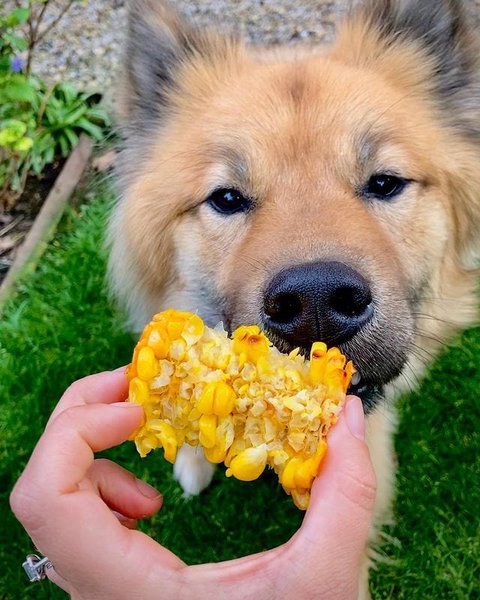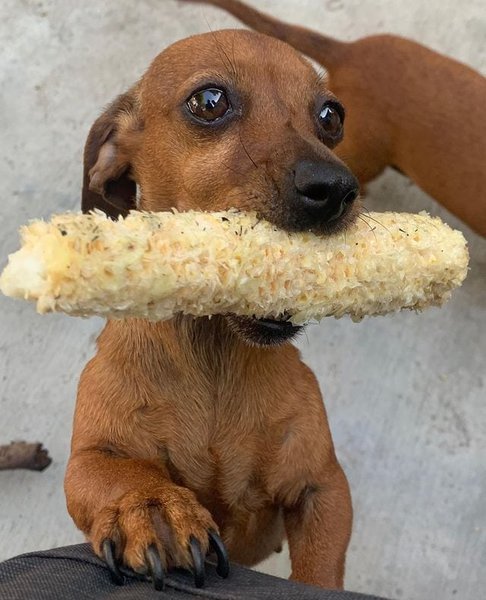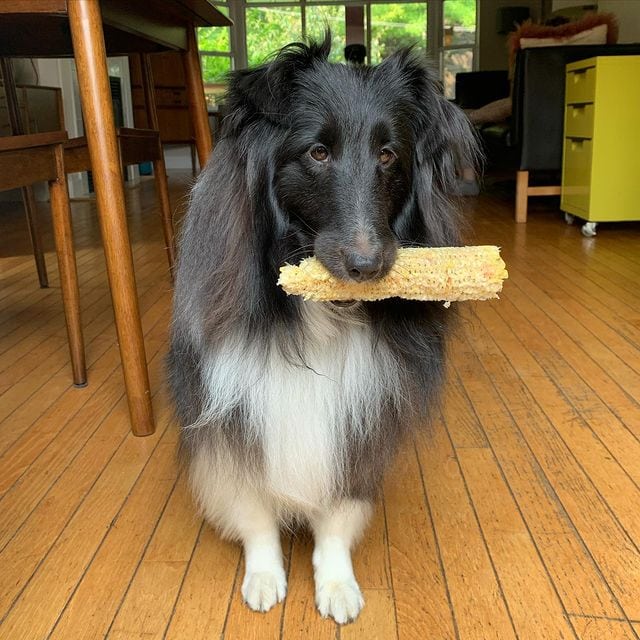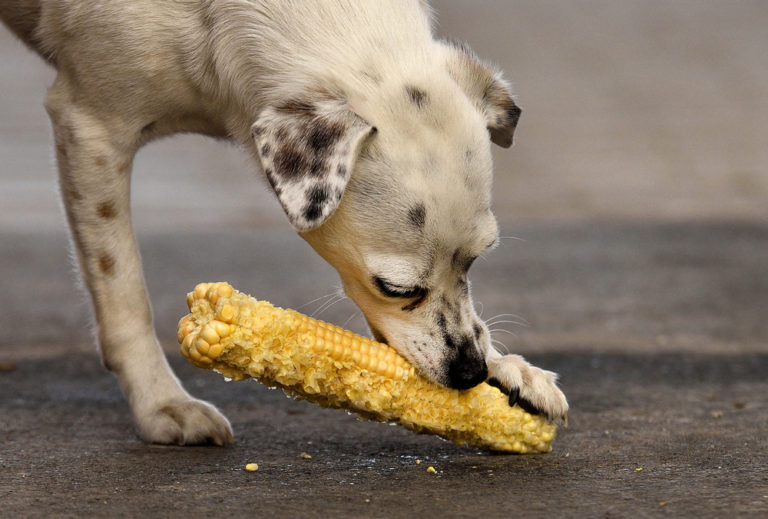I recently saw a dog playing fetch with a cob. And it made me wonder if our furry companions can eat corn on the cob.
Dogs cannot eat corn on the cob because it is dangerous for their digestive system. While corn is not toxic to dogs, it can lead to gastrointestinal injury and obstruction. The corn cob is also a choking hazard. And, corn does not digest in the stomach of dogs well. Additionally, the cob cannot pass through the digestive tract of a dog.
Therefore, when you treat your dog to some food off your plate, ensure that you do not give them corn on the cob.
You may be wondering what to do if your dog eats corn on the cob. Luckily, you can find the steps to nurse your companion back to good health below. But first, let’s look at what happens to your dog when they eat corn on the cob.
What If A Dog Eats A Corn Cob?

Can dogs eat corn whole? Yes, they can, but it is not good for them, and the following will happen.
Choking
The first thing that would happen when your dog eats corn on the cob is choking. The cob is a choking hazard because of its cylindrical shape, so your dog will likely choke on it.
When this happens, your dog will exhibit distress while pawing at the mouth. Your dog will also show signs of gagging, coughing, and salivation.
Gastrointestinal Obstruction
Besides choking, your dog will also suffer from gastrointestinal obstruction or injury. It occurs when the dog has a blockage that prevents food and liquid from passing through the digestive tract.
Symptoms of gastrointestinal obstruction include:
Vomiting
Your dog will start to vomit after a while; the timeline differs from pet to pet. You will notice retching and a look of discomfort in your dog.
Lack Of Appetite
The obstruction will also decrease the appetite of your dog. Your canine won’t have the enthusiasm for its favorite treats either.
Lethargy
You will also notice that your dog will suddenly become inactive and bored. It is because of the discomfort brought by the obstruction.
Abdominal Discomfort
Your dog will have a hard time coming up from a lying-down position. Your dog will also develop abnormal breathing.
Diarrhea
In the case of diarrhea, bowel movements will become more frequent. The consistency can range from soft stool to watery with mucus and spotting. You will also notice black tarry stool because the cob causes injury to the digestive tract. It leads to internal bleeding, and the digested blood is what gives the stool a dark color.
Constipation
If your dog does not get diarrhea, it will experience constipation. It can also be very uncomfortable for your dog to go through each day.
How Long Can Corn Cob Stay In Dogs’ Stomach?

A corn cob can stay in a dog’s stomach for weeks and sometimes even months if the dog shows no symptoms of gastrointestinal injury and the owner is not aware of cob ingestion.
The absence of gastrointestinal symptoms only happens if the corn cob is not stuck to the stomach walls or other parts of the digestive system.
Can The Dog Digest The Cob?
Unlike other vegetables, cob does not digest in the stomach of a dog. Therefore, do not expect your dog to digest the cob.
It could remain stuck in the stomach or move to other parts of the digestive tract without breaking down. When it gets stuck to the walls of the organs, your dog will show signs of gastrointestinal obstruction.
Can The Dog Poop Out The Cob?
There is a chance that your dog will poop out the cob without difficulty, with the poop almost intact. However, the cob would have to be small. And even after, the dog would require veterinary services to care for the digestive tract.
What Do I Do If My Dog Eats A Corn Cob?
If your dog eats a corn cob, contact your veterinarian immediately. Some dogs develop symptoms of choking and gastrointestinal injury after ingesting the corn cob. Therefore, your furry companion will require emergency services to remove the cob safely.
Dogs that ingest corn cobs often undergo surgery to remove the cob. This is a safe way to remove the cob because it ensures that the dog’s digestive tract suffers no additional injury from the abrasive texture of the cob.
Other dogs show no symptoms but will require a veterinarian’s examination. Therefore, find out how soon your veterinarian can see your dog. In the meantime, here’s what you can do:

Never Induce Vomiting
If you are wondering how you can make your dog throw up the corn cob, stop! Never attempt to induce vomiting in your dog unless your veterinarian gives clear instructions to do so.
Inducing vomiting is dangerous to your dog’s health. The corn cob will get lodged in your dog’s esophagus, making it more problematic and difficult to remove. Additionally, the corn cob will cause injury to the intestines and esophagus as it moves up.
Remain Calm
Your dog will notice your agitation and restlessness, which will fuel your doggie’s fear and anxiety. Therefore, try your best to remain calm even as you call your veterinarian or drive to the vet hospital.





